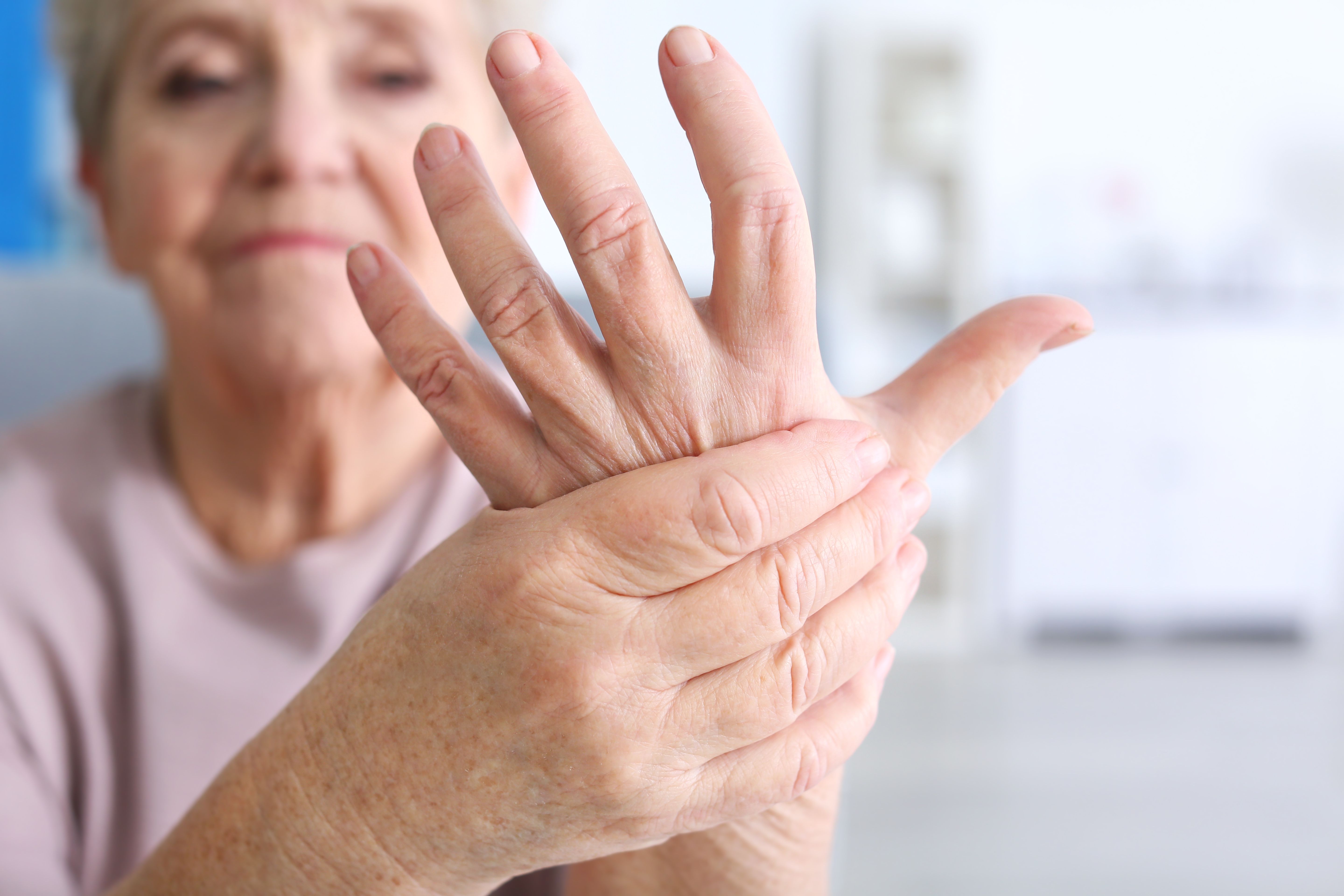- Center on Health Equity & Access
- Clinical
- Health Care Cost
- Health Care Delivery
- Insurance
- Policy
- Technology
- Value-Based Care
Weight Loss or Gain Not Linked to Outcomes in Hand Osteoarthritis
This study found no significant associations between weight changes and outcomes in hand osteoarthritis.
There was no evidence suggesting that changes in weight are associated with progression or incidence of radiographic hand osteoarthritis (OA), according to a recent study published in Arthritis Care & Research.
Older Woman Enduring Hand Pain | image credit: Africa Studio - stock.adobe.com

Hand OA is the second-most common form of OA and is estimated to affect 40% of adults by the age of 85. Previous studies have suggested a possible relationship between obesity and hand OA. At present, no cure exists for OA. Therefore, exploring potential associations between factors such as weight and the progression and incidence of OA could produce valuable findings to aid patients in the management of their condition. To address this lack of knowledge, investigators conducted a study to evaluate the long-term relationship between changes in weight—gaining or losing—and outcomes in hand OA.
Data were gathered from the Osteoarthritis Initiative (OAI) to identify nearly 4600 patients. Hand radiographic data were obtained at baseline. Changes in weight were analyzed between baseline and a 4-year follow-up, and data on pain were taken at baseline, as well as 2-year, 4-year, 6-year, and 8-year follow-ups. Additionally, worsening of joint space narrowing (JSN) was analyzed. Four cohorts were created in this assessment to measure outcomes: hand OA incidence, hand OA progression, hand pain development, and hand pain resolution cohorts.
Overall, researchers found that for every 5% increment of weight loss, progression and incidence of radiographic hand OA had odds ratios of 0.90 (95% CI, 0.67-1.23) and 0.92 (95% CI, 0.84-1.00), respectively, at 4-year follow-up. Similarly, at 8-year follow-up, ORs for the development and resolution of hand pain were 1.00 (95% CI, 0.92-1.09) and 1.07 (95% CI, 0.91-1.25). However, these were not statistically significant and, furthermore, no significant associations were found between weight loss or weight gain and hand OA progression, incidence, or hand pain throughout any of the cohorts.
“The absence of a relationship between weight change and hand OA could be attributed to hand joints not bearing any force from excess weight. Therefore, the effect of weight change on OA in joints could be considered to occur through biomechanical mechanisms,” investigators wrote, “This theory is supported by the observational studies from our team and others that have shown that while weight change is linked to structural defects of the joint and symptoms of knee OA, a weight-bearing joint, it is not associated with structural defects of the joint and symptoms of hip OA, which is less sensitive to mechanical loading from excess weight.”
Reference
Salis Z, Driban JB, McAlindon TE. Association of weight loss and weight gain with structural defects and pain in hand osteoarthritis: data from the Osteoarthritis Initiative. Arthritis Care Res (Hoboken). Published online December 21, 2023. doi:10.1002/acr.25284
